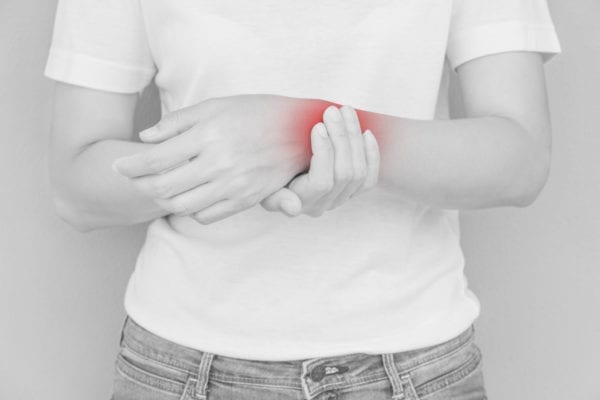
Watch Rash And How To Deal With It
Share
What Exactly Causes Watch Rash?
According to dermatologists, watch rash is contact dermatitis, a common form of eczema. Contact dermatitis occurs when your skin comes into contact with an allergen, irritants, or just friction.
What You Should Know About Watch Rash
Watch Rash has become more prevalent with the introduction of smart watches. Many smart watch users report rashes underneath the watch and band. These problems are well documented and today we will take a dive into what watch rash is and some remedies for it.

What are the Signs and Symptoms of a Watch Rash?
If you’re finding that your skin is repeatedly getting irritated underneath your watch, you might notice these symptoms in the spot of irritation:
- Red rash
- Itching
- Dry, cracked, scaly skin
- Bumps and blisters
- Swelling, burning or tenderness
How to Prevent And Heal a Watch Rash
There are different solutions to treating and preventing watch rash. Here are some of our suggestions:
#1 Clean Your Watch
Keep your watch clean and sanitized. Salt deposits can form from sweat, especially after workouts. Your watch will rub against these salt deposits causing rashes to form. Moisture and bacteria stuck in between can also be the culprit so it is imperative that you regularly clean and dry your watch.
#2 Is Your Strap Too Tight or Too Loose?
The manufacturers of smart watches recommend that you do not have the strap too tight or too loose but somewhere just in between. Many users tend to have their watches too tight because they think it will increase their tracker’s efficiency but this is not the case. It will not increase accuracy, but it can damage the skin over long periods of time. On the other hand, too loose of a strap and the watch with chafe against your skin with the extra movement. For a proper fit, the watch should be firm against your wrist but still be able to rotate around the wrist. We also recommend taking off the watch for at least 20 minutes a day or switching the watch to the opposite wrist.
#3 Use Body Glide Balms

Protecting the outer layer of skin with an invisible, non-toxic, plant-based product acting as your moisture barrier is your best bet to prevent watch rash. The barrier provided by Body Glide® products helps reduce unwanted friction between you and your watch, making watch rash a thing of the past. Keep your skin fresh and the harmful bacteria out. Problem solved! Keeping this outer layer of the epidermis healthy will help you combat watch rash most effectively. We recommend using Body Glide® balms because they not only keep your skin moisturised but stop your watch from chafing your wrist due to friction.
#4 Relieve Itching
With a watch rash, refrain from scratching or itching any affected areas. Scratching and itching can cause added stress to the rash and increase chances of infection. Use creams such as hydrocortisone which helps to reduce itching and irritation.
#5 See a Specialist
If your rash continues to worsen after trying some of our solutions, your dermatologist can help minimise the damage and get a conclusive answer on what is the best option to solve your watch rash problems. They will help you determine if the rash is from an allergy or irritant and can help you decide on the best treatment for your specific case. Dermatologists can also prescribe antibiotics and steroids if a case becomes severe.
Irritant Contact Dermatitis
Irritant Contact Dermatitis is the result when the skin is injured by chemicals, environmental factors, or friction and cannot heal itself faster than the damage being done. Irritants dry up skin causing inflammation.

Common irritants include:
- Detergents
- Solvents
- Acids
- Alkalis
- Adhesives
- Metalworking fluids
- Friction
Contact dermatitis occurs as watch rash anytime there is an irritant or substance causing friction between your wrist and the watch. Make sure to keep this area well cleaned and dry. Soap, perfume, and sweat that gets caught in between can become the culprit.
Allergic Contact Dermatitis
Anytime your skin comes into contact with a substance that causes an immune reaction, it is most likely allergic contact dermatitis. Certain individuals are more sensitive to common materials than others. In the case of allergic contact dermatitis, your body releases cytokines to trigger your immune system. You will start to notice this form of contact dermatitis 2-3 days after exposure.
The most common allergens include:
- Personal care products
- Formaldehyde
- Plants – poison ivy
- Ragweed pollen
- Sunscreens
- Antibiotic creams
- Nickle
Allergic contact dermatitis, in terms of watch rash, usually occurs due to an allergic reaction to nickel or certain polymers used in watches and watch bands. If you feel you might be allergic to these materials, getting an allergy and dimethylglyoxime test may be in your best interest.
